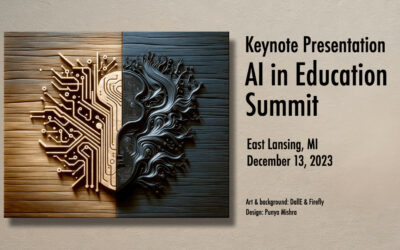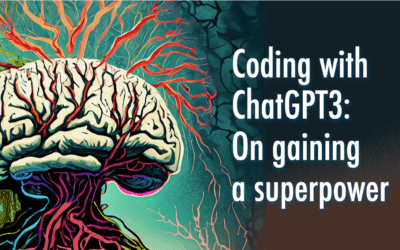Teaching is an inherently creative act, requiring educators to navigate constraints and find innovative ways to engage students. In our recently published chapter, Danah Henriksen, Lauren Woo and I explore the notion of “repurposing” as a vital skill for fostering creativity within these constraints.
What is repurposing? Simply put, it’s the act of using tools, objects, or ideas in ways that were not originally intended. It involves looking beyond the obvious designed purpose and reimagining new possibilities. Just like designers often repurpose elements to solve problems creatively, teachers can harness this mindset to transform their teaching practice.
Why is repurposing so powerful? Because it allows teachers to make the most of the resources they have available, even when faced with limitations. Instead of being constrained by a lack of specialized tools or materials, repurposing empowers educators to see everyday objects and ideas with fresh eyes, adapting them to serve their pedagogical needs.
Our chapter delves into the concept of “melioration,” which refers to the ability to borrow concepts from seemingly unrelated fields and apply them to one’s area of expertise. This cross-pollination of ideas is at the heart of repurposing, fostering interdisciplinary thinking and sparking creative solutions.
We highlight examples from the teaching literature, showcasing how educators have repurposed everything from everyday objects to digital tools, breathing new life into their lessons and engaging students in unexpected ways. By embracing a “design mindset,” teachers can continuously reimagine the affordances of the tools at their disposal, pushing the boundaries of what’s possible in the classroom. It pushes us, as educators, to “re-see” our learning spaces with fresh eyes, and to reimagine the possibilities that lie within the tools and objects at our fingertips.
Complete citation, abstract and link to a pre-publication version below:
Henriksen, D., Woo, L., & Mishra, P. (2024). Working with Constraints: Creativity Through Repurposing. in D. Tillman (Ed.) Exploring Perspectives on Creativity Theory and Research in Education. Springer.
Abstract: This chapter introduces repurposing as a core skill for creative teaching, particularly for working within constraints. Not only are constraints a reality in most educational settings; they are a necessary part of creative work in any domain. Repurposing, broadly defined, involves the use of a tool in ways that are not originally intended. We explore repurposing as a process of melioration, also known as the, “competence to borrow a concept from a field of knowledge suppos- edly far removed from his or her domain and adopt it to a pressing challenge in an area of personal knowledge or interest” (Passig 2007, p. 2). Teachers and teacher educators should view repurposing as a creative pedagogical ability to adapt and use what is available, by seeing beyond the obvious designed purpose of an object. Unpacking the notion of repurposing based on literature argues for teaching as an act of design, noting that design (like teaching) is inherently purpose-driven and constrained. Both users and designers often repurpose objects, tools, or ideas to creatively rethink the possibilities and manage or address the constraints of their immediate situation. We discuss how tools and objects have affordances that signal what users can do with them, while also having a zone of possibility or alternate purposes that allow users to think beyond the tools’ intended purposes. By engaging this kind of design frame, we suggest that developing repurposing skills can be part of teachers’ exercise of creativity to work with given constraints, particularly in interdisciplinary (e.g., STEAM) contexts. In highlighting several examples from the teaching literature, we aim to exemplify the notion of repurposing as an essential pedagogical skill to allow creativity under constraint.





0 Comments